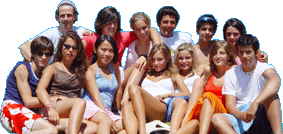Horseback riding can be exciting or relaxing, practical or recreational. No matter what, though, it requires plenty of practice! Below we've gone into some of the horseback riding basics, but it's always best to learn how to ride a horse first-hand and under the guidance of an instructor.
How to Get on the Horse
Most horses are accustomed to being mounted from the left side, also referred to as the "near" side. Put your left foot in the left stirrup, hold on to the saddle with your hands, and then hoist your right leg up and over the back of the horse. Once you're in the saddle, grab the reins. Get settled and then let your legs hang free to check to make sure the stirrups are at the right height for you; they should hang down to about your ankles.
Reining
Reining is used to indicate to the horse which direction he should go in. It involves pulling slightly on the reins; this, in turn, turns the horse's head in the direction you want to go. Don't yank on the reins; remember that the horse has a sensitive mouth, where the bit is, therefore gentle pulls will do the trick.


Riding Gaits
Make sure you feel comfortable and in control at each gait before moving on to the next. Squeeze your calves to indicate to the horse to pick up the pace and move on to the next gait.
- Walking
Start off slow, slow enough to be able to each of the horse's four hooves hit the ground. Keep your chin up, your back straight and your heels down while maintaining this pace. This is the perfect pace to practice reining (see above).
- Trotting
Once you feel confident walking, move up to trotting. At the beginning it will feel quite bouncy. While walking is a four-beat gait (you feel all four hooves individually hit the ground), trotting is a two-beat gait (the front left and back right hit at the same time, and then the front right and back left). Try to get into the rhythm of the horse's movements by rising in and out of the saddle with each beat. Despite the bouncier movements, try not to lose your posture: chin up, back straight, heels down. - Cantering
Once you're totally comfortable trotting, the next step up is cantering, which is much faster. Instead of the up-and-down motion of trotting, when you canter you will rock forward and backward. Keep good posture, sit back slightly in the saddle and keep your bottom slightly elevated. - Galloping
The very fastest gait is the gallop, which is similar to a canter but at an even greater speed. The average gallop is about 25-30 miles per hour (40-50 kilometers per hour). Instead of sitting back in the saddle like with cantering, you will lean slightly forward, still keeping your bottom elevated.
How to Stop
Once you're in motion, be it walking, trotting, cantering or galloping, at some point you'll need to stop! Pull - don't yank - back on the reins and shift your weight to the back of the saddle, putting more weight on your bottom and heels. Once you have come to a stop, immediately let go of the reins and give the horse some well-deserved attention with affectionate strokes and pats.





